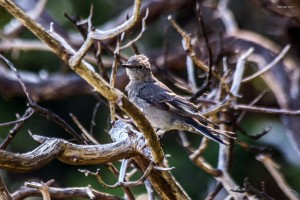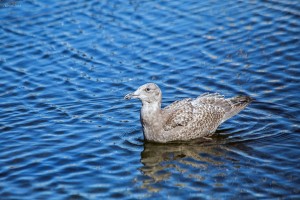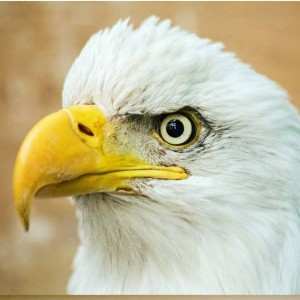During winter, many people choose to feed wild birds, either in their own backyards, down at the beach or at a marsh. If you choose to feed the birds, please feed them only food which is good for them. Feeding them the wrong food will harm them more than help them.
DO NOT FEED BREAD – bread is often the first kind of food humans give to birds. However, birds receive very little nutrition from bread and may die from a diet high on bread as this can cause malnutrition, especially in the winter when there is little other food available. Also, stale bread with mould can cause Aspergillosis (a lung disease).
Do not feed birds bread. It can cause malnutrition and mould on it can cause lung disease.
Feeding Birds at Home
For those of you who are feeding at home, here are some of the favourite foods of certain birds:
Suet Block: Chickadees, Nuthatches, Woodpeckers, Flickers, Creepers (available from most Supermarkets and pet stores)
Cracked Nuts: Chickadees, Nuthatches, Towhees, Juncos, Finches
Raw Peanuts: Woodpeckers, Sparrows, Grosbeaks, Jays (unsalted, of course)
Sunflower Seeds: Chickadees, Nuthatches, Towhees, Juncos, Finches (hulled or whole unsalted- Sparrows, Grosbeaks, Jays)
 Cut Apples: Robins, Woodpeckers, Flickers, Starlings
Cut Apples: Robins, Woodpeckers, Flickers, Starlings
Soaked Raisins
Chopped Grapes
Wild Bird Seed: Many varieties of birds, including Towhees, Juncos, Finches, Sparrows, Jays, Pine Siskins
Niger Thistle: Goldfinches, Pine Siskins
Sugar/Water: Hummingbirds (1 part sugar/4 parts water- keep fresh)
DON’T FORGET TO HAVE WATER AVAILABLE TOO!
In the winter, when it is freezing outside, wild birds have difficulty finding water so it is important that a constant supply of water is available to them. It has been found that they do not like to have water in deep containers so a shallow dish is preferred. In the summer the birds also like to have a shallow water dish available for bathing.
It is important to keep your bird feeders clean, as mouldy seeds can be one of the causes of Aspergillosis in birds. Sadly many die from this disease. Regularly washing your feeders in a mild solution of water and bleach (9 parts water/1 part bleach) will ensure the feeders are kept sterile.
Feeding Birds in Public Spaces
 If you are feeding birds at the beach or at a marsh, you can feed:
If you are feeding birds at the beach or at a marsh, you can feed:
Whole Wheat: Geese, Ducks, Pigeons
Corn or Hen Scratch
Soaked Dog Kibble** Gulls, Crows
** Kibble must be soaked prior to feeding to wild birds, otherwise it will absorb any liquid the bird drinks and swell up inside their crop.
What Food Does that Bird Eat?
The bird’s bill will tell you!
Seed eating birds have short, thick bills for crushing seeds and shelling them.
Examples: Sparrows, Grosbeaks, Buntings, Finches.
Insect eating birds have slender, pointed bills that enable them to pick up insects.
Examples: Vireos, Kinglets, Warblers, Wrens
Some insect eating birds have a very wide mouth for catching insects on the wing.
Examples: Swallows, Nighthawks, Swifts.
Probing birds have long, slender bills for probing in mud in search of food.
Examples: Snipe, sandpipers
 Preying birds have strong, sharp, hooked, bills for tearing flesh of prey.
Preying birds have strong, sharp, hooked, bills for tearing flesh of prey.
Examples: Owls, Hawks, Falcons, Eagles
Straining birds have flattened bills for straining food from mud.
Examples: ducks, geese
Ground feeding birds have short, stout bill for feeding on the ground.
Examples: quail, grouse
Fish eating birds have long, sharp bills for spearing fish.
Examples: Herons, Egrets
